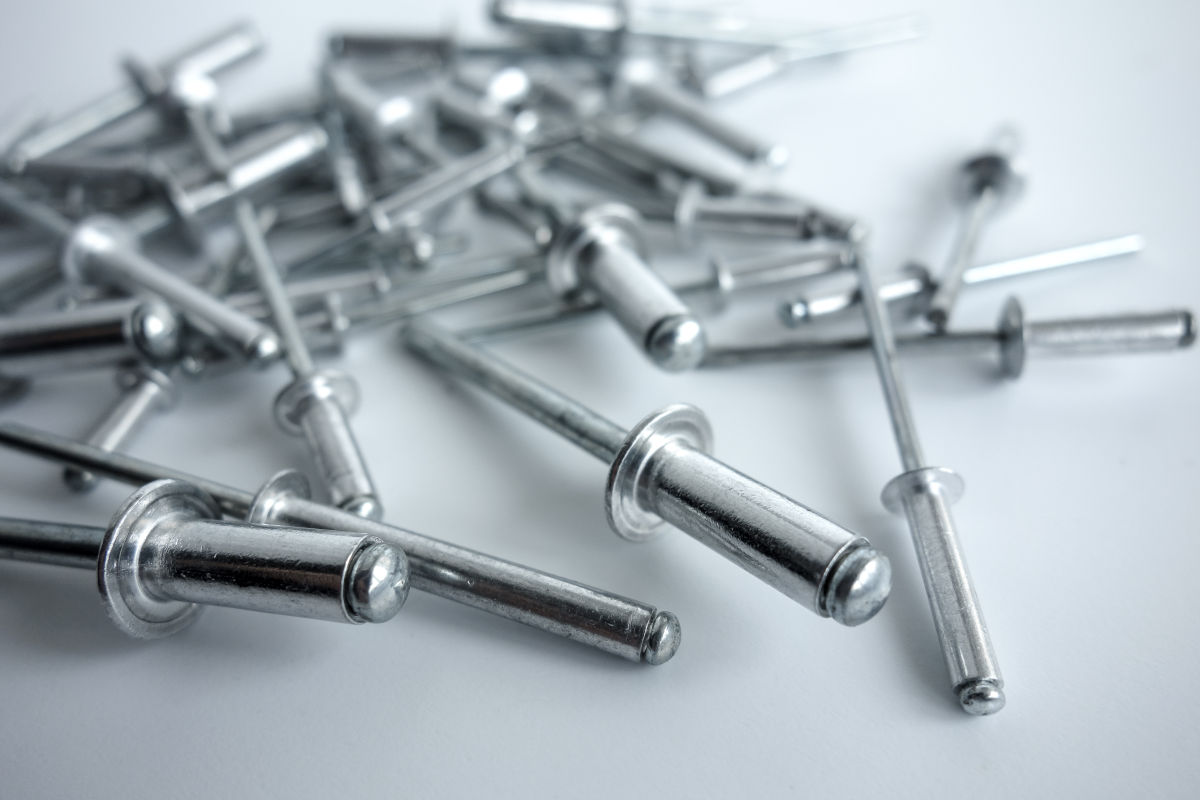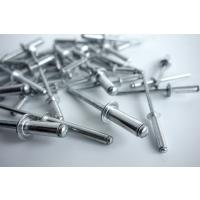- Home
- Blog
- Screws & Fixings
- Rivets: Definition, Uses and What to Buy
Rivets: Definition, Uses and What to Buy

Structures and other components require various parts to fasten and secure objects together. Like screws and bolts, rivets are reliable types of fasteners that connect the parts and fix them in place.
The first rivet dates all the way back to Ancient Egypt, but multiple versions are now in circulation, serving as vital fasteners in the manufacturing and construction industries, as well as in certain DIY projects.
The differences in rivets determine the appropriate use for which they are to be used. From aircrafts and shipbuilding to jewellery and home roofing, rivets are perfect for unlimited applications.
In this article, we provide an explanation of rivets, types of rivets, their uses, and which design to buy for certain projects.
What Is a Rivet
A rivet is a heavy-duty mechanical fastener that remains in place permanently once fixed. The design features a head at one side and a cylindrical stem, known as a tail, at the other.
The heads at each end stop the rivet from being removed from the hole in which it is placed. In terms of appearance, it looks like a metal pin or bolt. Its purpose is to join and fix two or more parts or objects together.
There are many types of rivets on the market, each proposing unique benefits for various fastening jobs. They also come in different materials, sizes and finishes. As well as other materials, rivets are made from various metals. You can typically find aluminium, brass, stainless steel and copper rivets.
How Does a Rivet Work?
A rivet works by entering a punched hole or drilled holes in the surface material of where you want to connect a rivet. The rivet is then pushed into the hole until fully inserted.
During the installation process, the tail is smashed. It becomes deformed and the shaft end expands, creating a dumbbell shape and locking the materials securely. In the end, the tail is misshapen and almost one and a half times bigger than its original size.
What Are Rivets Used For?
Rivets don’t get enough praise. As they provide superior fastening abilities, they’re great for both light and heavy-duty tasks, and are great for supporting tensile loads.
Historically, rivets were popular tools used in industries like shipbuilding, bridge building, and construction. They are now essential pieces of equipment in the manufacturing industry, and are commonly seen in gutter construction, fibreglass roofing, doors, windows, blinds, and storage sheds.
When you install rivets, the chief purpose is to provide strong, reliable fixing of two or more materials. It can provide greater strength than other fasteners like screws, bolts and nuts for the same job.
Types of Rivets
Choosing the right rivet type will ensure the best results for whatever project you’re working on. While all serving as fasteners, the different kinds vary in design and specific purpose. Here are the top types of rivets on the market today.
Blind rivets
Blind rivets are commonly referred to as pop rivets. This type of rivet is designed under the premise that you can’t see the other side of a joint. They go in blind, so to speak.
Blind rivets are tubular fasteners that feature a mandrel in the centre. They are placed into drilled holes ready for joining two materials. The blind end expands, and the mandrel snaps. You can use them when you are unable to see the end of a joint. They are quick to install and are often used in aerospace and the electronics industry.
Drive rivets
Another blind rivet, the drive rivet has a short mandrel and is driven into holes using a hammer that smashes the blind end until it expands, preventing it from coming out of the hole. Drive rivets are best for fixing metal sheets, building materials and soft materials.
Flush rivets
Flush rivets are also known as countersunk rivets as they use a countersunk hole. A flush rivet is best used in external metal surfaces as they provide a good appearance from the outside as they sit flush with the surface where they are installed. You will find this type of rivet mostly in aircraft exterior for aerodynamic reasons.
Solid rivets
Solid rivets are one of the oldest fasteners for joining two materials and one of the most common types of rivets used today. The shafts and heads are deformed once in place using a rivet gun or rivet hammer.
They are highly reliable accessories that work well in scenarios where optimum safety is required, like certain parts of aircrafts where hundreds of solid rivets are used.
Tubular rivets
Tubular rivets typically feature a head on one side with a hollow end on the other. They’re most often used for commercial sheet metal applications. Tubular rivets are available in different types, including full tubular rivets and semi-tubular rivets where there is little force needed for installation.
Split rivets
Split rivets are a type of self-piercing/self-drilling rivet that are great for home repair jobs. The shaft splits in opposite directions, and they have sharp tips that puncture their own hole through softer materials like leather, textiles, plastic and wood. With split rivets, there is no need to drill holes beforehand.
Friction-lock rivets
A friction lock rivet comes in different head styles, either countersunk or dome shaped, and is very much like an expanding bolt. It’s one of the earliest forms of blind rivets, often associated with aerospace.
Oscar rivets
The Oscar rivet is similar in style and function to blind rivets. It has splits and a hollow shaft that causes the end inserted into the hole to flare outwards once in place, preventing removal.
What to Buy
Shopping for rivets can be tricky. You need to find the correct rivets for your project to make sure they work as expected. When comparing rivets, think about factors like the material, and the size and style of the rivet body and rivet head.
The following considerations can help you to decide which rivets to purchase.
The Material
A general rule of thumb is to choose rivets made from the same material that you intend to fasten. As an example, if you’re riveting steel to steel, use steel rivets.
When you match the materials, it helps to ensure strength and minimum corrosion. It’s also important to consider corrosion-resistance when you shop for rivets. Objects exposed to weathering or chemicals require a corrosion-resistant rivet, like stainless steel.
The Sizing
Rivet size is essential, as rivets must make the perfect fit for the hole they’re applied to. As the drilled holes are made before the rivet installation, the size must be exact or it will not secure properly.
As well as the diameter, rivets must also be the correct length. The rivet should be long enough to penetrate the objects you want to join while also protruding approximately one and a half times the diameter.
Head Styles
Rivets come with different head designs. Think about the finish you want for your project to determine which head to go for. Most heads stick out slightly once installed, whereas countersunk heads sit flush with the object you rivet.
Summary
Rivets are some of the strongest and secure fasteners you will find on the market. They are an ideal component in various projects for DIY enthusiasts and skilled workers alike. With so many different designs from pop rivets to structural steel rivets, acquiring the right ones ensures that they will function as intended.
FAQs
What is a rivet?
A rivet is a mechanical fastener that secures two objects or materials together. In terms of design, it features a head at one side and a tail at the other. Once installed, the rivet locks into permanent position.
What are rivets used for?
Rivets are superior fasteners that work for both light and heavy-duty applications. They are used worldwide for multiple purposes, from construction and infrastructure to jewellery and home repairs.
How are rivets installed?
Rivets are installed using riveting tools such as a rivet gun or rivet hammer. The tool forces the rivet body to deform and securely fasten in place through a predrilled hole.


